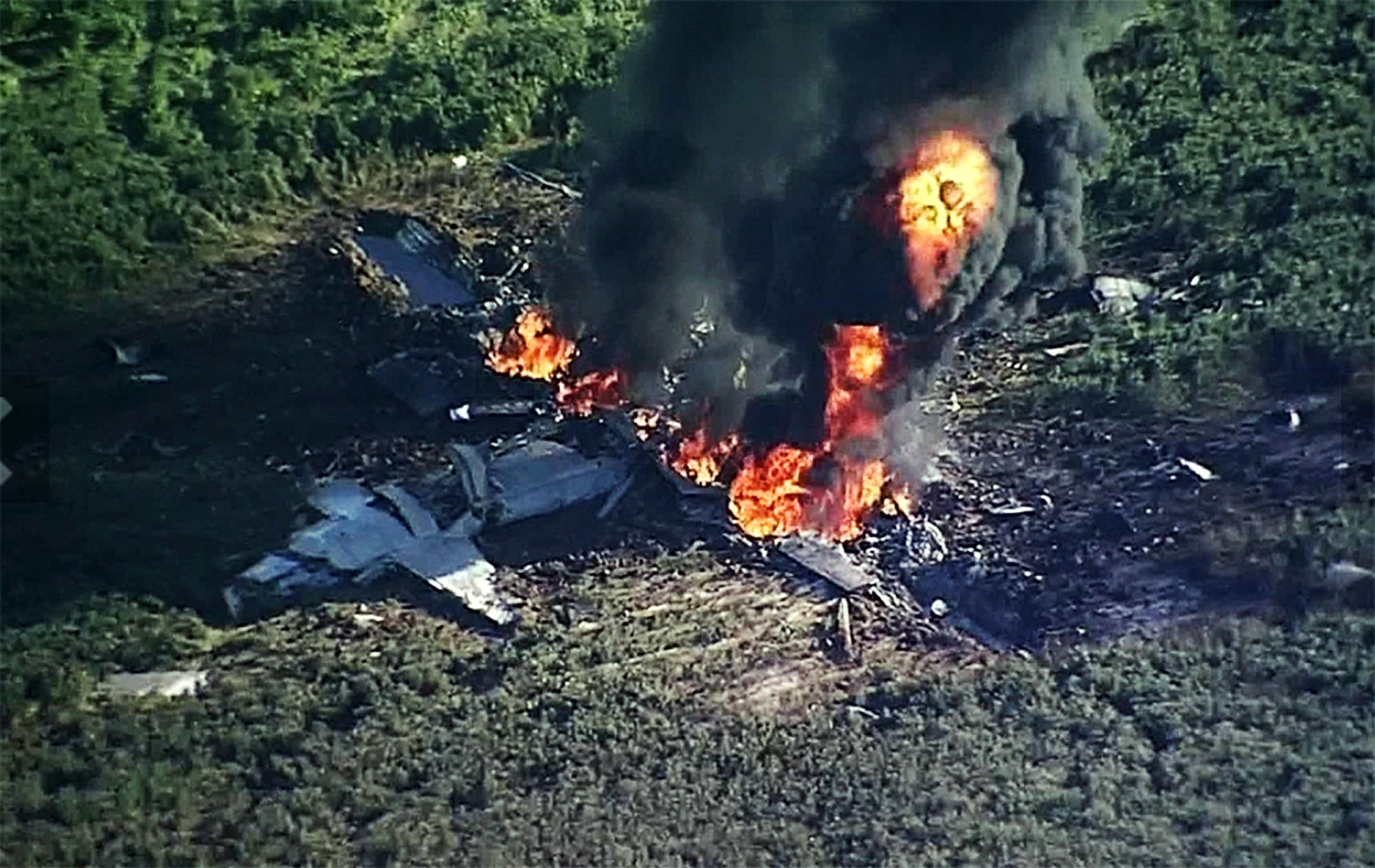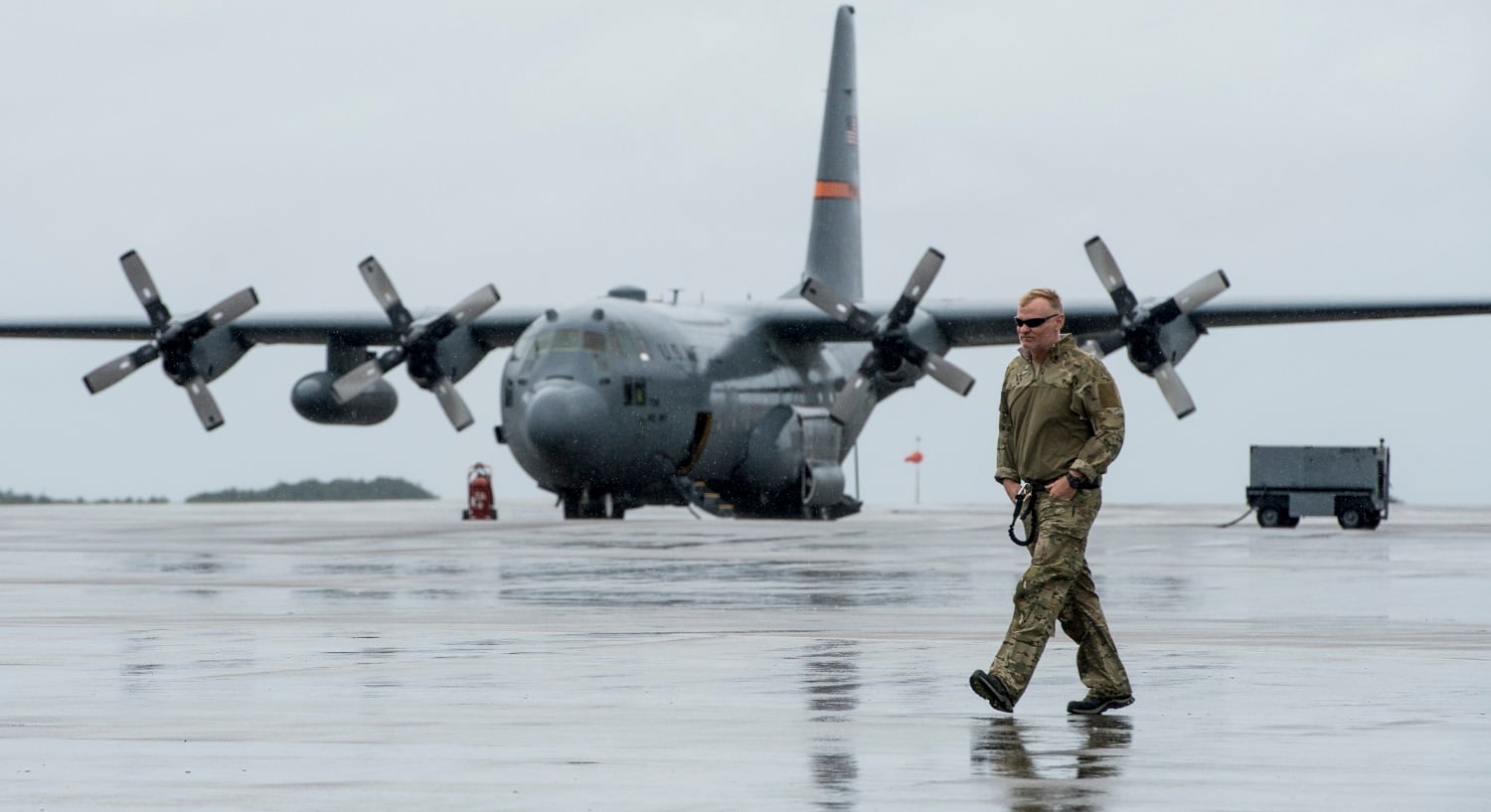The Air Force in February grounded 60 C-130H Hercules aircraft after a review found their pre-1971 propeller blades could be susceptible to dangerous cracking and needed to be replaced.
All but five of those C-130s have had their blades replaced and returned to flying status, said Air Force spokeswoman Ann Stefanek Thursday. The remaining five are in regularly scheduled depot maintenance, which will include blade replacement. The Air Force had 188 C-130Hs in fiscal 2017, meaning nearly one-third of that fleet was not flying for several weeks. The Air Force also had 110 of the newer C-130J aircraft in fiscal 2017.
Rep. Joe Courtney, D-Conn., chairman of the House Armed Services seapower and projection forces subcommittee, revealed the groundings in a hearing Thursday morning. The 103rd Airlift Wing of the Connecticut Air National Guard has eight C-130Hs, six of which were among those grounded for blade replacements.
“I believe it is far past time for Air Force acquisition leadership to recognize that our C-130H fleet has a safety issue that requires real and urgent investment in a readily available alternative propeller,” Courtney said.
The service started taking a closer look at its propeller blades as a result of the horrific KC-130T crash that killed 15 Marines and a sailor in 2017. An investigation found that crash was caused by a deteriorating propeller blade, which was corroded when the plane entered an Air Force maintenance depot in 2011 but was ultimately not repaired. That corrosion deteriorated further into a crack, which doomed the aircraft, Yanky 72.
The Air Force commissioned an independent review team to look into its blade overhaul processes after that crash, which came up with a new 21-step process, Stefanek said. That team — consisting of senior maintenance, acquisition, safety and logistics professionals — compiled maintenance records as part of their work.
In January, a senior review board convened to review the investigative findings, and all actions since the KC-130T crash, Stefanek said. The board found there were 23 cases where propeller blades had any kind of intergranular cracks, Stefanek said. All 23 blades are no longer in service, she said.
Almost all of them, 22 blades, were manufactured before 1971 — the year when the Air Force switched to a different manufacturing process that resulted in more uniformly made, reliable propellers.
Air Force Chief of Staff Gen. Dave Goldfein and Lt. Gen. Warren Berry, deputy chief of staff for logistics, engineering and force protection, were among those who reviewed the compiled information.
RELATED

Once the Air Force realized its pre-1971 propellers — manufactured with more of a manual process — were susceptible to cracks, the Air Force decided to not fly C-130Hs with those blades until they could be replaced, Stefanek said. The Air Force started replacing blades in early February, she said. Most units were able to quickly replace blades and get them back in the air, and they came up with workarounds in the meantime, she said.
“There are now no aircraft flying with blades manufactured before 1971,” Stefanek said.
The removed blades were condemned and disposed of, but were not inspected because there are no other pre-1971 blades remaining in the Air Force’s inventory, she said.
The replacement process for 55 of those aircraft took about a month, Stefanek said. Some C-130Hs had their blades replaced at their home installations, she said, but others were fixed as they went through the depot process.
It is uncertain whether any of the blades pulled from C-130Hs since early February had any kind of corrosion.
The majority of affected C-130Hs were from Air National Guard units, Stefanek said, but there were a handful of active component and Air Force Reserve planes that needed replacements as well. The affected planes were spread out across multiple units, she said — some had one or two that needed replacing, but other units had five or six affected planes.
Operators and maintainers working on the C-130Hs were notified about the concerns surrounding the older propeller blades, and the need to replace them, through the standard procedures, including technical orders and the chain of command. Members of Congress were also notified, she said.
Because most of the C-130H fleet continued to operate, Stefanek said, the Air Force did not make a more public announcement about the problem. Typically, the Air Force publicly announces those kind of groundings when an entire fleet is down, she said.
Stephen Losey is the air warfare reporter for Defense News. He previously covered leadership and personnel issues at Air Force Times, and the Pentagon, special operations and air warfare at Military.com. He has traveled to the Middle East to cover U.S. Air Force operations.





